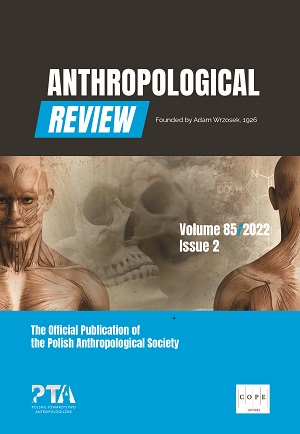2D:4D digit ratio and its relationship to BMI, sporting choices and physiological predispositions among women
2D:4D digit ratio and its relationship to BMI, sporting choices and physiological predispositions among women
Author(s): Agnieszka Tomaszewska, Julia Anna LubońskaSubject(s): Social Sciences, Sports Studies
Published by: Wydawnictwo Uniwersytetu Łódzkiego
Keywords: contact sport; non-contact sport; volleyball; soccer; prenatal testosterone; weight
Summary/Abstract: The 2D:4D digit ratio has been established as a biomarker of the level of exposure to prenatal sex hormones’ balancebetween prenatal testosterone (PT) and estrogenne levels. Higher 2D:4D indicates lower PT exposure and vice versa. Data suggests that PT exposure is linked to a risk-taking attitude and physical aggressiveness, both of which are requirements in contact sport. A possible correlation between 2D:4D and human body mass index has also been identified. The aim of the study was to examine the relation between 2D:4D ratio and choice of sport. It was assumed that female soccer players who choose a contact sport would have a lower 2D:4D ratio (thus experiencing higher exposure to PT) than female volleyball players (selecting non-contact sport). The analysis was also aimed at identifying whether a correlation between prenatal testosterone level and BMI exists. The participant sample consisted of 103 women – 36 volleyball players, 33 soccer players and a control group (N=34). Measurements were collected in 2019–2020. The results suggest that 2D:4D was significantly different in women practicing various sports (contact and non-contact sports). Women engaged in contact sports had lower 2D:4D than women engaged in non-contact sports, and vice versa (p<0.05). 2D:4D correlated positively with BMI and body weight – the higher the 2D:4D ratio, the higher the BMI and body weight (and vice versa) (p<0.05). Low 2D:4D (high PT exposure) may predict the choice of more risky, aggressive contact sports, and vice versa. High 2D:4D may predict a higher BMI and body weight, and vice versa.
Journal: Anthropological Review
- Issue Year: 85/2022
- Issue No: 2
- Page Range: 135-146
- Page Count: 12
- Language: English

